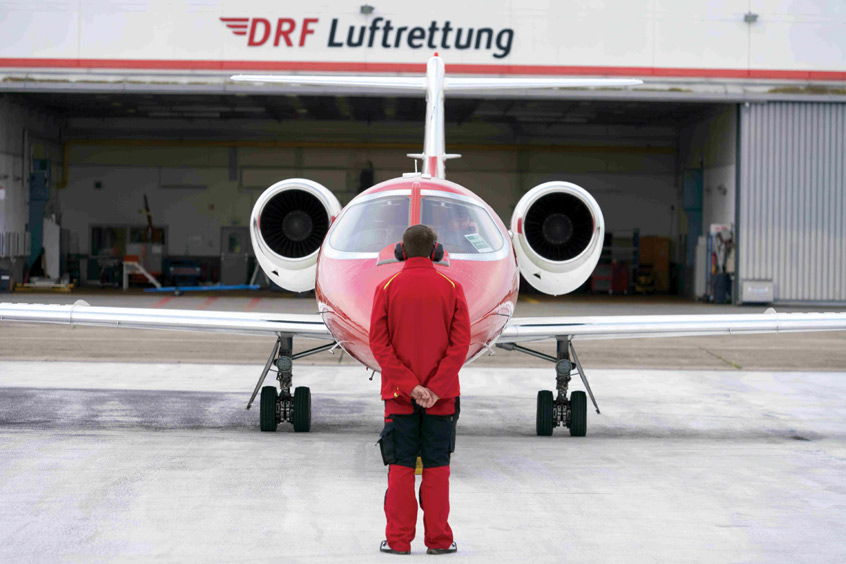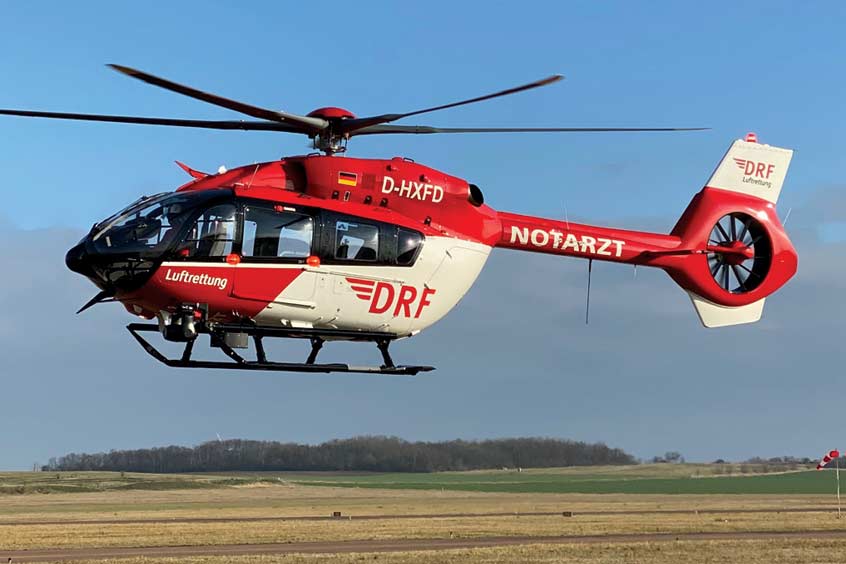ACE 2026 - The home of global charter.
 The bimonthly news publication for aviation professionals.
The bimonthly news publication for aviation professionals.



The crew on duty at DRF Luftrettung’s alert centre recently fielded a call for a flight to the Republic of Congo. The German non-profit organisation’s ambulance aircraft was specially requested for a challenging mission.
There were various measures that had to be taken and certain factors to consider, despite no prior planning and little lead time. In addition to the usual overflight permits, organising suitable refuelling stops and working out the medical parameters, the crew also had to take PCR tests for COVID-19. Negative PCR tests are now a requirement to enter many countries. Mission coordinator Marco Bauer says: “What was special about this mission was that we had to review and assess the current conditions in the relevant countries, among other things. We always have to review the latest entry requirements and national regulations in precise detail and comply with them, even during the coronavirus pandemic. This included organising PCR tests for the rostered flight crew.”
Having organised everything, the crew set off on their mission from Karlsruhe/Baden-Baden airport at 08:00 local time the following Friday. The long flight hours for the mission resulted in the cockpit crew needing three members: Captains Torsten Beierlein and Miles Bennett along with co-pilot Christian Schaub. Following a total of nine flight hours and stopovers in Algeria and Nigeria, the Learjet 35A landed in Pointe-Noire at 5:30 p.m. local time. This port city is situated on the Republic of Congo’s Atlantic coast, north of the border with Angola. “For me personally, it’s always an extraordinary experience to fly a route like this across the African continent,” recounts Christian Schaub. “The geography, climate conditions, weather phenomena and sociostructural factors all make it a very special kind of challenge.”
After a short overnight hotel stay, Dr Thomas Kieber and paramedic Klaus Grimm took a taxi to the nearby hospital. Thomas Kieber, the flight doctor, recalls: “The 64-year-old Frenchman was in Congo for work and had caught malaria in early April. With a heavy fever and his overall health declining badly, he received inpatient treatment at a hospital in Pointe-Noire. Unfortunately he exhibited complications including liver and kidney failure as well as a volvulus, which needed an emergency operation for a bowel resection. The patient was put on an ICU ventilator for the following days.”
After achieving pulmonary stabilisation (stabilising the lung function) in the patient and transporting him to the airport, the ambulance jet took off for France at 10:30 local time on the Saturday. For this particular case, the flight back maintained sea level cabin pressure so as not to seriously damage the part of the patient’s bowel that had been operated on. Sea level pressure means that the aircraft altitude is reduced accordingly so that the differential pressure in the cabin is kept as low as possible. “This factor was already considered beforehand when we were planning the flight,” adds Wolfgang Maier, mission coordinator at the DRF Luftrettung alert centre.
The crew landed in France on time just before midnight. The patient could be safely repatriated to his home country thanks to the professional work of everyone involved.
“What was special about this mission was that we had to review and assess the current conditions in the relevant countries, among other things,” Bauer concludes.
A brand new Airbus H145 helicopter with a five-blade rotor has also gone into service in Halle with DRF as the new Christoph Sachsen-Anhalt.
Compared to its predecessor, the helicopter is lighter and therefore offers a higher possible payload with the same performance. In addition, the fifth rotor blade makes it even quieter in the air, which benefits patients and crew. The commissioning is a premiere for the state of Saxony-Anhalt: the helicopter is the first with a five-blade rotor to be launched here for the DRF Luftrettung. The organisation plans to convert all of its H145s from four to five blades within the next three years.
“We are very excited to see how our new Christoph Sachsen-Anhalt will present itself in operation,” says Björn Heiderich, station manager and pilot in Halle. “We know the enthusiastic reports from our colleagues from Stuttgart, Villingen-Schwenningen, Hanover and Regensburg who are already using the H145 with a five-blade rotor. Hence our expectations are high. And we are very pleased that we now have even better options for caring for our patients.”